NLP Interview Guide - Key Concepts and Techniques
Supervised Learning
Given a collection of labeled examples (where each example is a text X paired with a label Y), learn a mapping from X to Y.
Self-Supervised Learning
Given a collection of just text, without extra labels, create labels out of the text and use them for pretraining a model that has some general understanding of human language.
- Language Modeling: Given the beginning of a sentence or document, predict the next word.
- Masked Language Modeling: Given an entire document with some words or spans masked out, predict the missing words.
In-context Learning
First pretrain a self-supervised model, and then prompt it in natural language to solve a particular task without any further understanding.
Example: pretrain a LLM on billions of words, and then feed in *what is the sentiment of this sentence:
- Checkout api.together.xyz !
N-gram Language Models
Let’s say we wanted to train a supervised model on sentiment analysis. In the past, we would have trained a supervised model on labeled examples (text/score pairs).
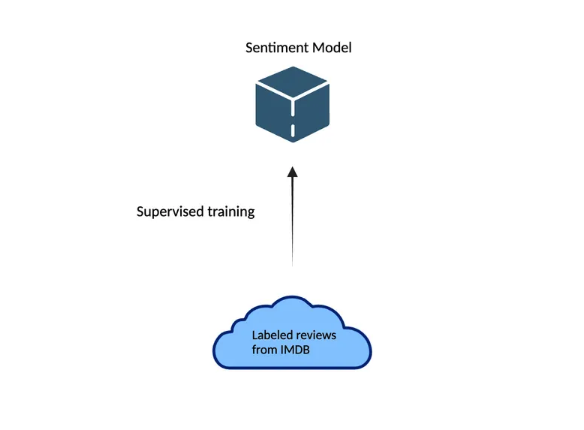
Nowadays, we take advantage of transfer learning:
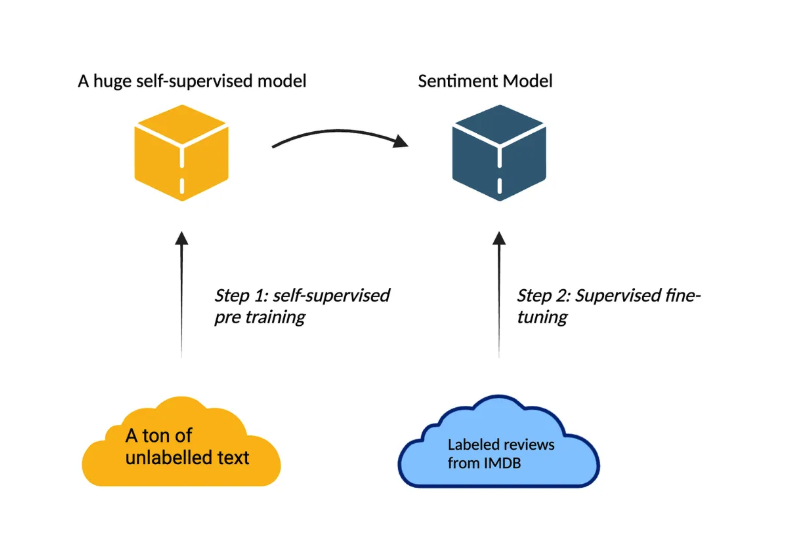
For n-gram models discussion, we focus on language modeling which form the core of Step 1: self-supervised pretraining.
Language Models Assign a Probability to a Piece of Text
- Translation: Picking the most likely translation from a list of candidates.
- P(i flew to the movies) «« P(i went to the movies)
- Speech Recognition:
- P(i saw a van) »» P(eyes awe of an)
Language models allow us to assign this probability to the words. Example: in search bars.
Probabilistic Language Modeling
- Goal: Compute the probability of a sentence or sequence of words.
The Chain Rule
Conditional Probability:
\[P(B | A) = \frac{P(A, B)}{P(A)}\]Rewriting:
\[P(A, B) = P(A) P(B | A)\]The chain rule in general:
\[P(x_1, x_2, x_3, ..., x_n) = P(x_1) P(x_2 | x_1) P(x_3 | x_1, x_2) ... P(x_n | x_1, ..., x_{n-1})\]Chain Rule Applied to Compute Joint Probability of Words in a Sentence
\[P(w_1 w_2 \dots w_n) = \prod_{i} P(w_i | w_1 w_2 \dots w_{i-1})\]Example Calculation:
For the sentence “its water is so transparent”:
\[P(\text{"its water is so transparent"}) = P(\text{its}) \times P(\text{water} | \text{its}) \times P(\text{is} | \text{its water})\] \[\times P(\text{so} | \text{its water is}) \times P(\text{transparent} | \text{its water is so})\]- Unigram Model: Calculating the probability of “its” without any context. Frequency of its in the given corpus.
Estimating these probabilities:
\[P(\text{the} | \text{its water is so transparent that}) = \frac{Count(\text{its water is so transparent that the})}{Count(\text{its water is so transparent that})}\]- This suffers from sparsity because the phrase “its water is so transparent that” might occur only a handful of times in the corpus.
- Also, we aren’t sharing information across semantically similar prefixes in this approach. All prefixes are treated independently, which is inefficient.
- Therefore, we use Markov Assumption: It will not consider words beyond a fixed window size (context length).
- Checkout infini-gram paper.
One Hot Vectors
- N-gram models rely on the “bag-of-words” assumption.
- Represent each word/n-gram as a vector of zeros with a single 1 identifying its index.
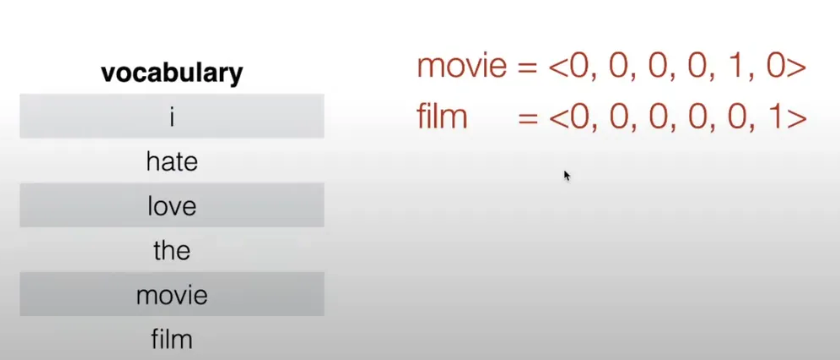
- All words are equally similar, even though “movies” and “film” are semantically similar. There is no information sharing between different words. All words are orthogonal.
- We ideally want a representation space in which words, phrases, sentences, etc. that are semantically similar have similar representations.
Notion of Perplexity
- Lower perplexity = better model.
- Perplexity is the exponentiated token-level negative log-likelihood.
- Given a prefix, how many next words are reasonable predictions given that prefix.
| N-gram Order | Unigram | Bigram | Trigram |
|---|---|---|---|
| Perplexity | 962 | 170 | 109 |
Neural Language Models
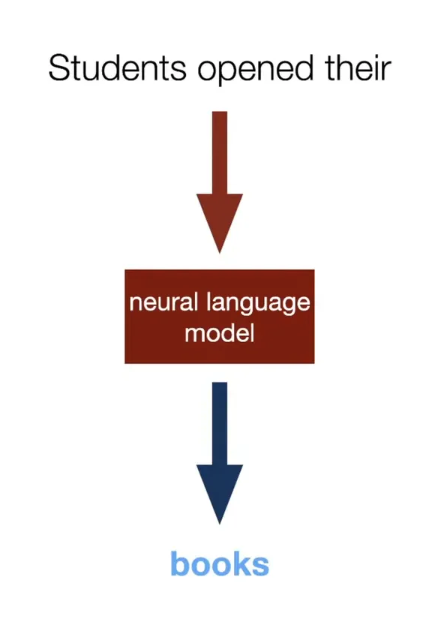
Words as Basic Building Blocks
- Represent words with low-dimensional vectors called embeddings.

- There is a loss of interpretation with these numbers. [Research field of explainability]
- The word embeddings start completely randomly.
- Neural networks compose word embeddings into vectors for phrases, sentences, and documents. It uses word embeddings to find representations for phrases and sentences.

- Predict the next word from composed prefix representation.
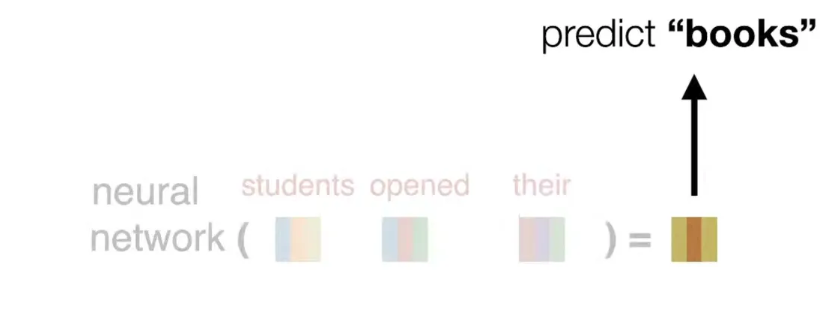
Linear Layer (Feedforward Layer) on the Prefix Vector Representation
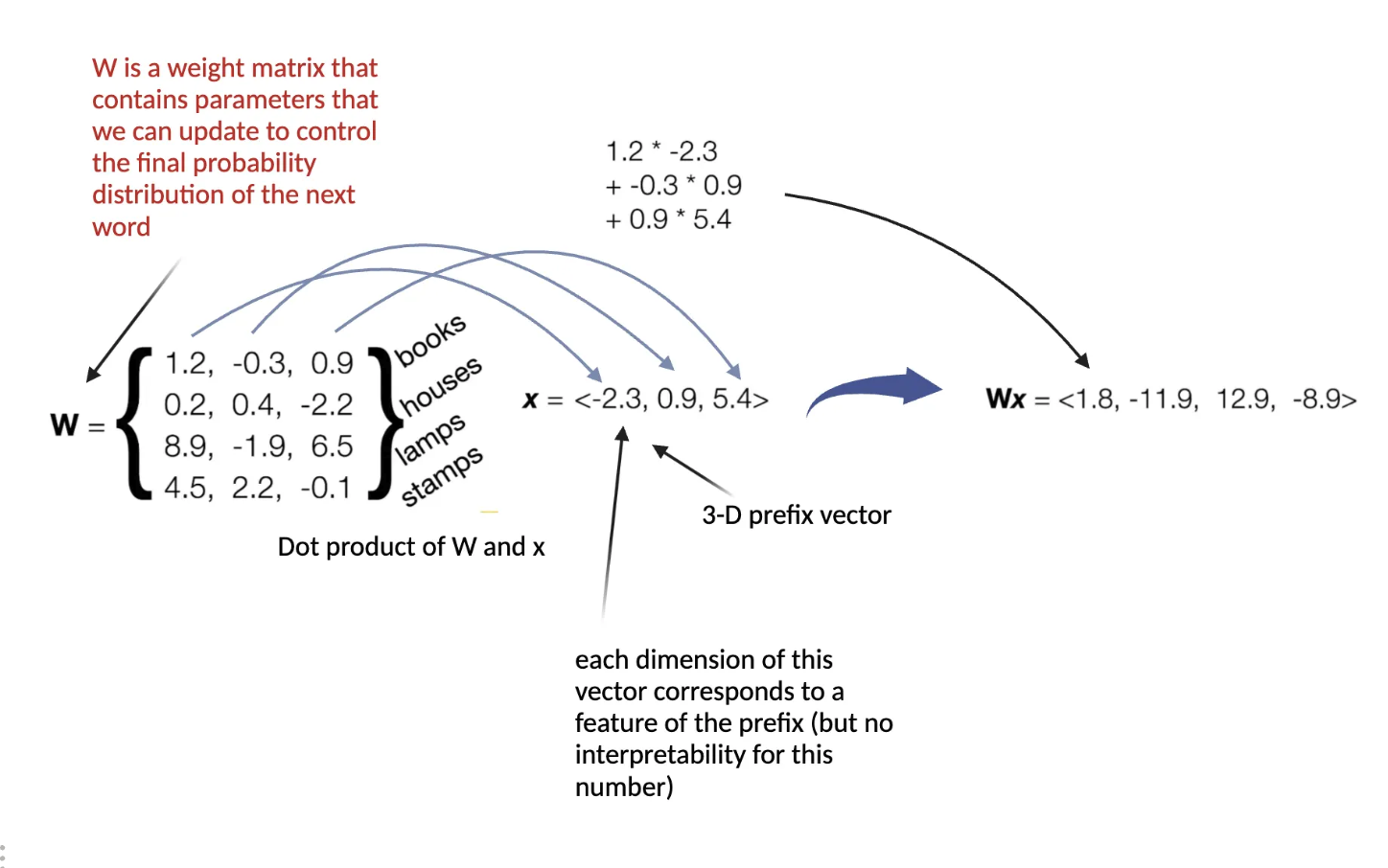
How to go from vector representation (Wx) to a probability distribution of the next word?
- Softmax Layer: Converts a vector representation into a probability distribution over the entire vocabulary.
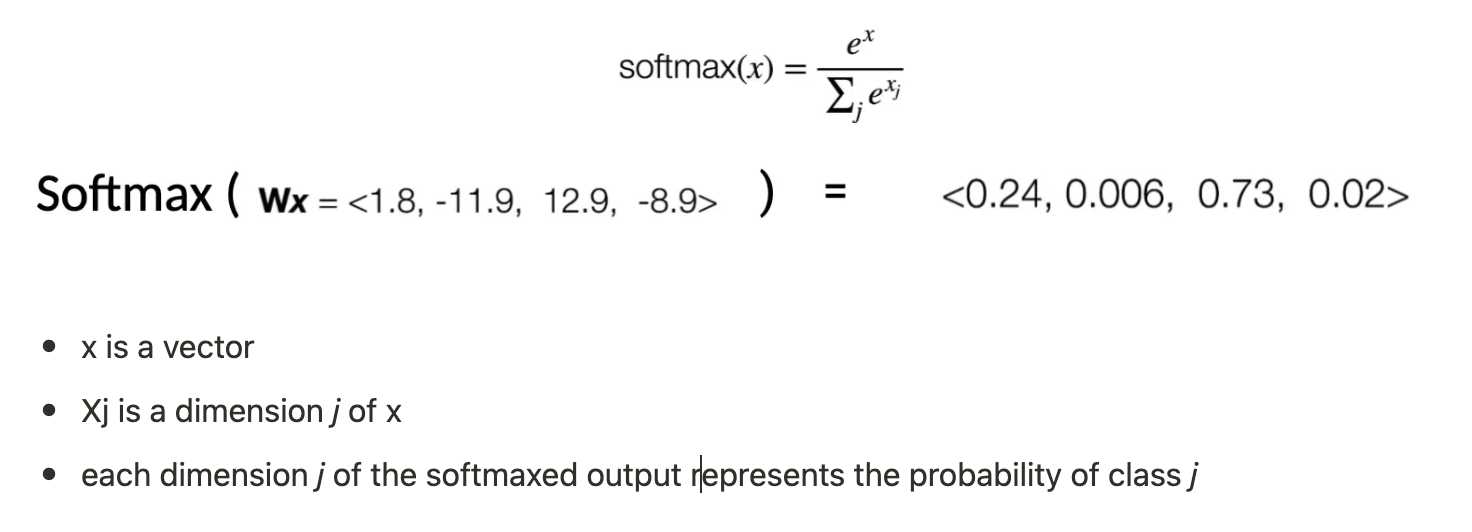
Different Types of Composition Functions
Input: sequence of word embeddings corresponding to the tokens of a given prefix.
Output: single vector.
- Element-wise functions (e.g., just sum up all the embeddings)
- Concatenation
- Feed-forward neural networks
- RNNs
- Transformers
A Fixed Window Neural Language Model
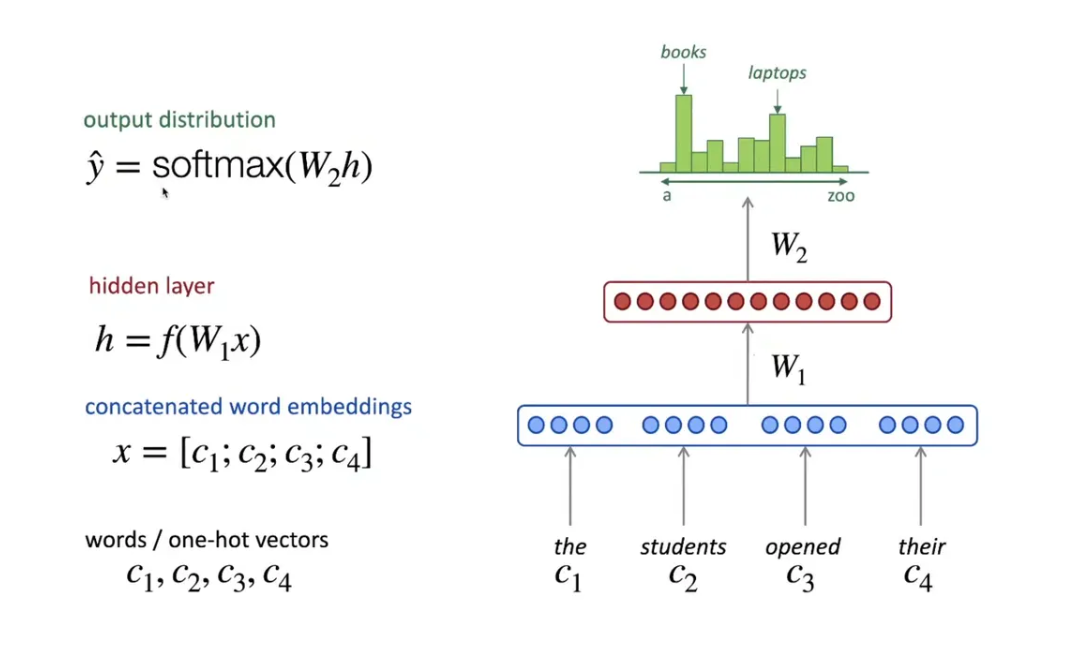
- ReLU non-linearity = max(0, x). Others include tanh and sigmoid.
- f in the above figure is a non-linear function. We want to model non-linear relationships, and therefore there is a need for non-linear functions.
How Does This Compare to Normal N-gram Model?
Improvements:
- No sparsity problem.
- Model size is O(n), not O(exp(n)).
Remaining Problems:
- Fixed window size is very small.
- Enlarging window size enlarges W.
- Window can never be large enough!
- Each Ci uses different rows of W. We don’t share weights across the window.
These remaining problems are addressed by Recurrent Neural Networks.
Recurrent Neural Networks
It is sequential and does the calculation from left to right [words of prefix].
- It addresses the problem of not sharing the weights across the window.
- It also takes care of the Markov assumption. Theoretically, there is no limit to
tin the RNN equation. We can keep on calculatingh(t).
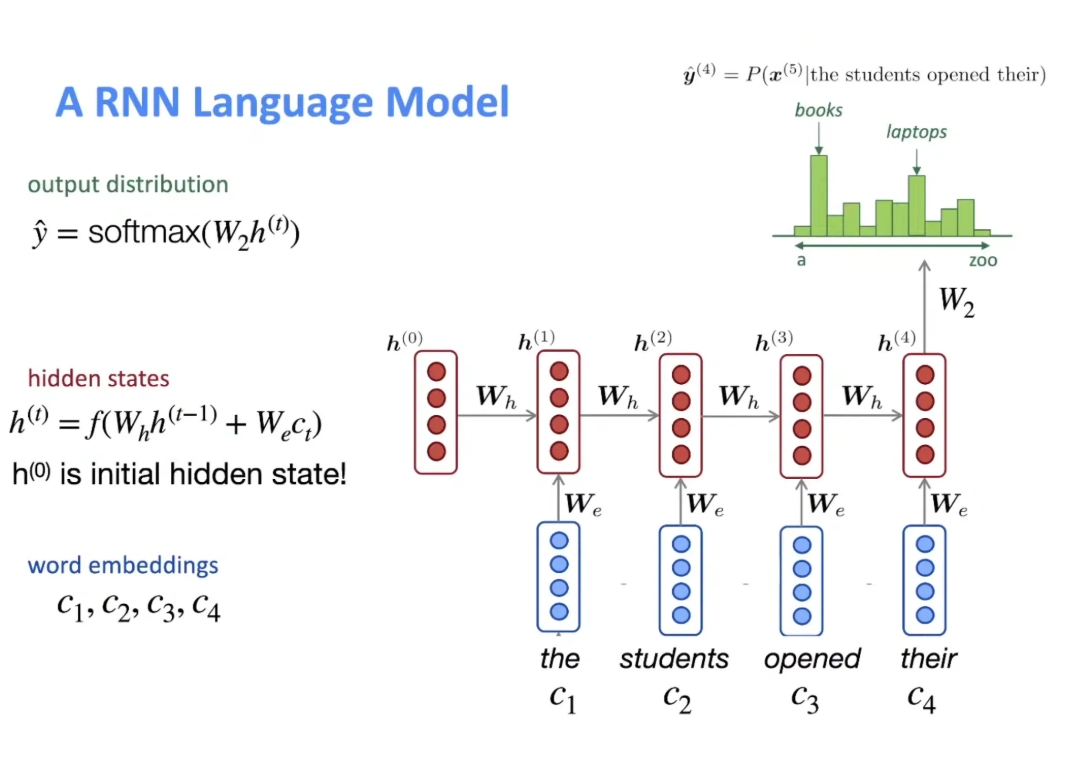
RNN Advantages:
- Can process any length input.
- Model size doesn’t increase for longer input.
- No limit on the size of the window (theoretically). Can use information from many steps back.
- Weights are shared across timestamps → representations are shared.
RNN Disadvantages:
- Recurrent computation is slow.
- In practice, difficult to access information from many steps back.
Neural Language Models [Backpropagation]
Training Neural Language Models
- Last time we talked about forward propagation.
- How can we make NLMs make good predictions?
- NLMs contain parameters (e.g.,
W1,W2,c1,c2…)- These parameters are randomly initialized.
-
Thus, $P(w_1 w_2 \dots w_n) = \prod_{i} P(w_i w_1 w_2 \dots w_{i-1})$ is also randomized initially.
- By training the NLM, we adjust its parameters to maximize the likelihood of the training data.
Recap of Forward Propagation
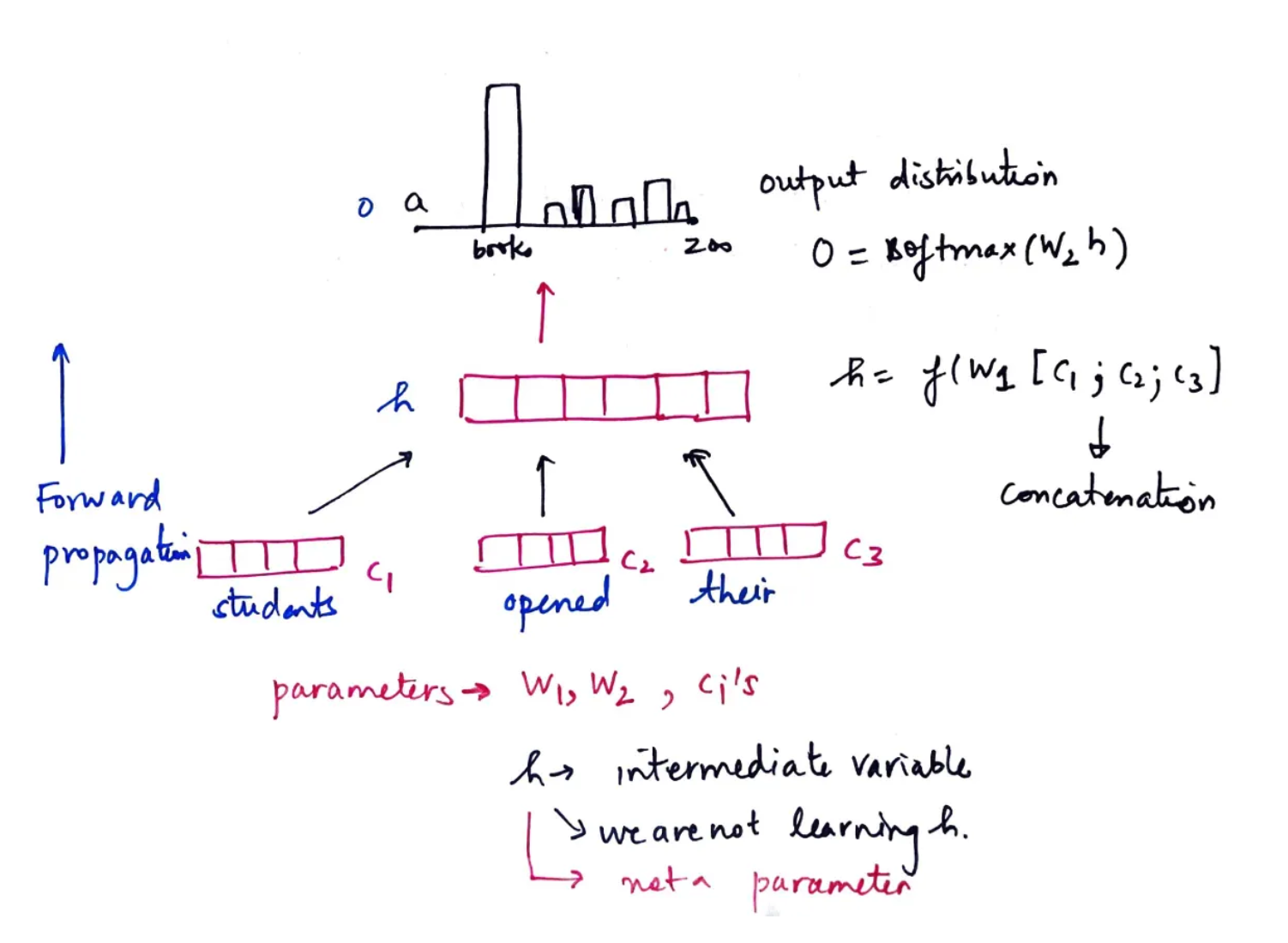
Steps to Train a Neural Language Model
- Define a loss function L(ϴ), where ϴ refers to all the parameters of the model.
- This tells us how bad the model is at predicting the next word.
- Loss function is required to be smooth and differentiable.
- Given the loss function L(ϴ), we compute the gradient of L with respect to ϴ.
- The gradient provides us the direction of steepest ascent of the loss function.
- Step in negative gradient will minimize the loss function. That’s the goal!
- Gradient is same dimensionality as ϴ.
- Given the gradient
dL/dϴ, we take a step in the direction of the negative gradient.
Where:
- $\theta$ represents the model parameters
- $\eta$ is the learning rate
- $\nabla_{\theta} L$ is the gradient of the loss function with respect to $\theta$
Optimizers:
- Gradient Descent parameter: The one shown above is SGD (stochastic gradient descent).
- Other optimizers include Adam, Sophia (LLMs).
Hyperparameters of Gradient Descent:
- Learning rate
- Batch size
Loss Function:
- Loss function: Cross-entropy loss, negative log-likelihood of the next word from the training data given the prefix.
Enjoy Reading This Article?
Here are some more articles you might like to read next: